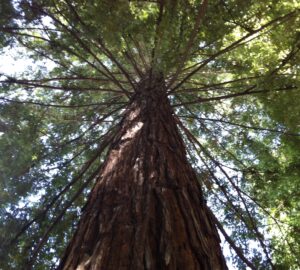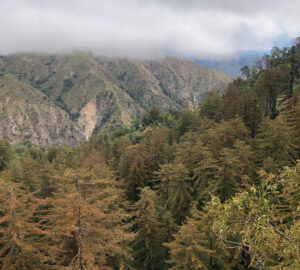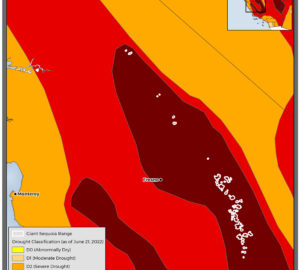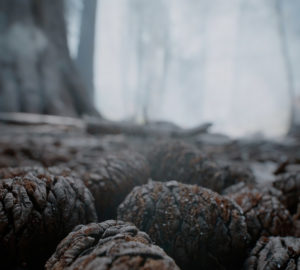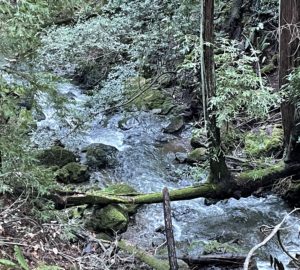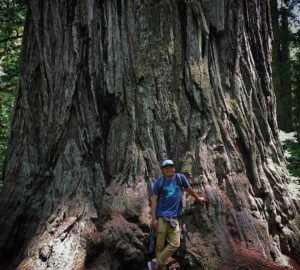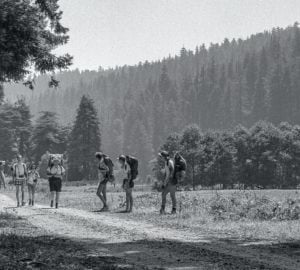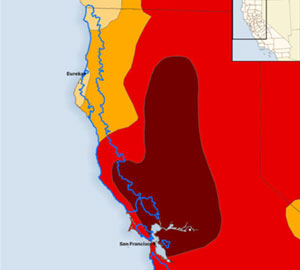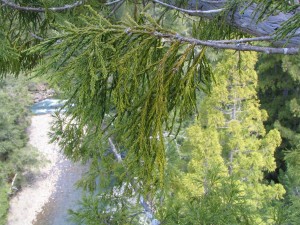
With the heatwave we are experiencing in California this week, it’s hard to not think about drought. All this dry weather, combined with below-average rainfall, must pose serious challenges for local trees. What’s amazing to me, is that the fantastically tall coast redwoods have evolved to withstand incredibly dry conditions at their treetops.
If you climb up a tall redwood alongside RCCI researcher Stephen Sillett on a sunny day, you will ascend along a natural gradient of drought from the forest floor up hundreds of feet to the highest branches. Along this route, you will see the leaves steadily change from being broad and flat on the shady lower redwood branches to being short and thick in the sunny upper crown.
This change in leaf shape is a result of the striking environmental conditions that are unique to the treetop. As a redwood tree grows taller, water must overcome gravity in order to flow up through the trunk and hydrate the uppermost leaves. Naturally occurring evaporation out of the leaves (called transpiration) pulls the water skyward and stretches the column water within the tree like a rubber band. This tension helps shape the form of leaves that grow at the top of redwood trees, making them shorter and thicker and therefore better able to handle the water tension. This leaf shape has other advantages for redwood treetop foliage too, it helps the leaves avoid catching too much sunlight by being smaller and pointing upwards.
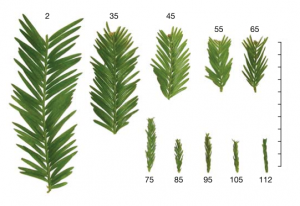
We are watching the treetops of redwoods throughout the landscape to see how they are tolerating our seasonal drought through our Redwoods and Climate Change Initiative. Have you seen any redwood tops die back from drought stress this year? I’d love to hear what you’re seeing in the forest.

